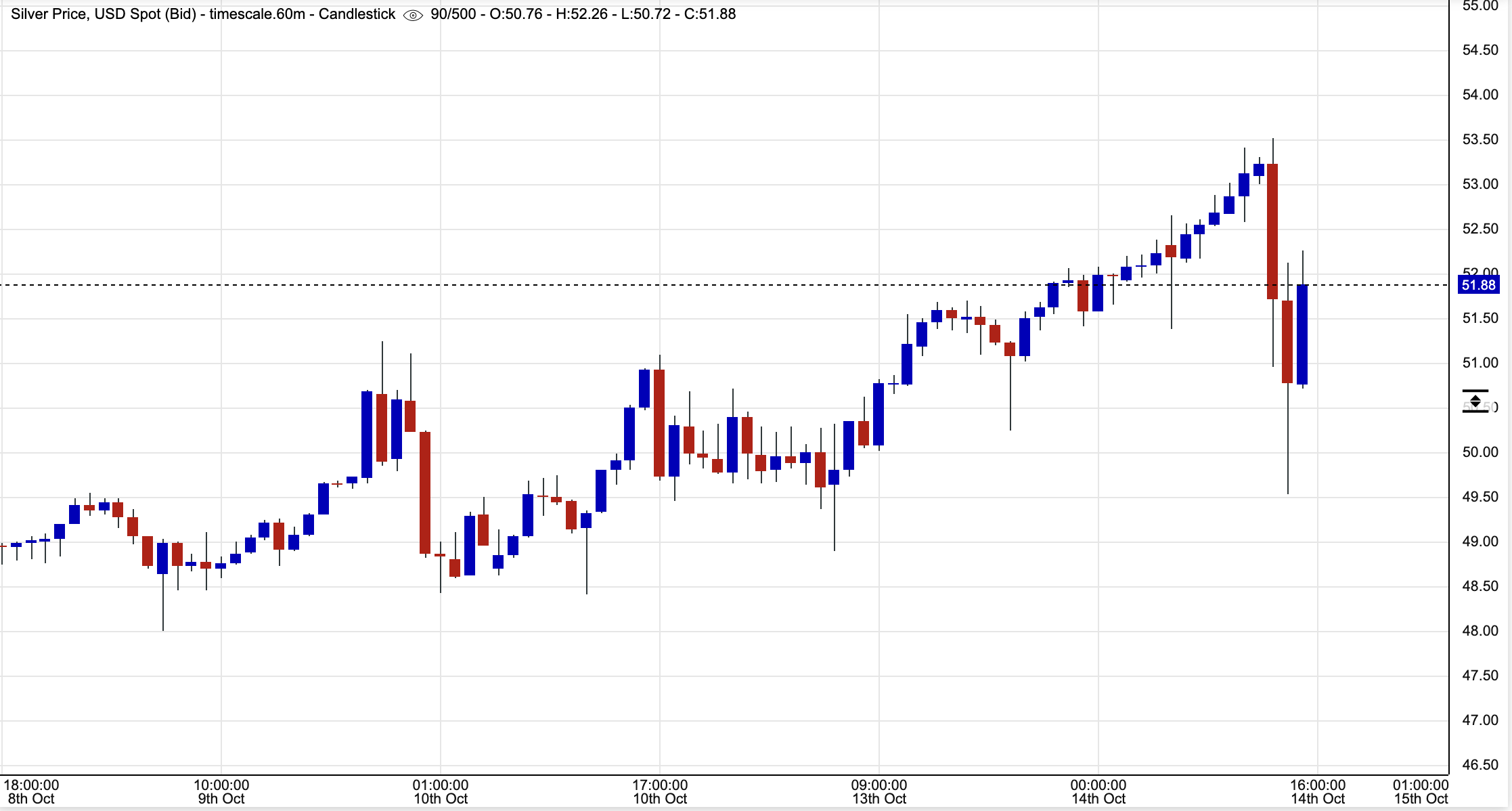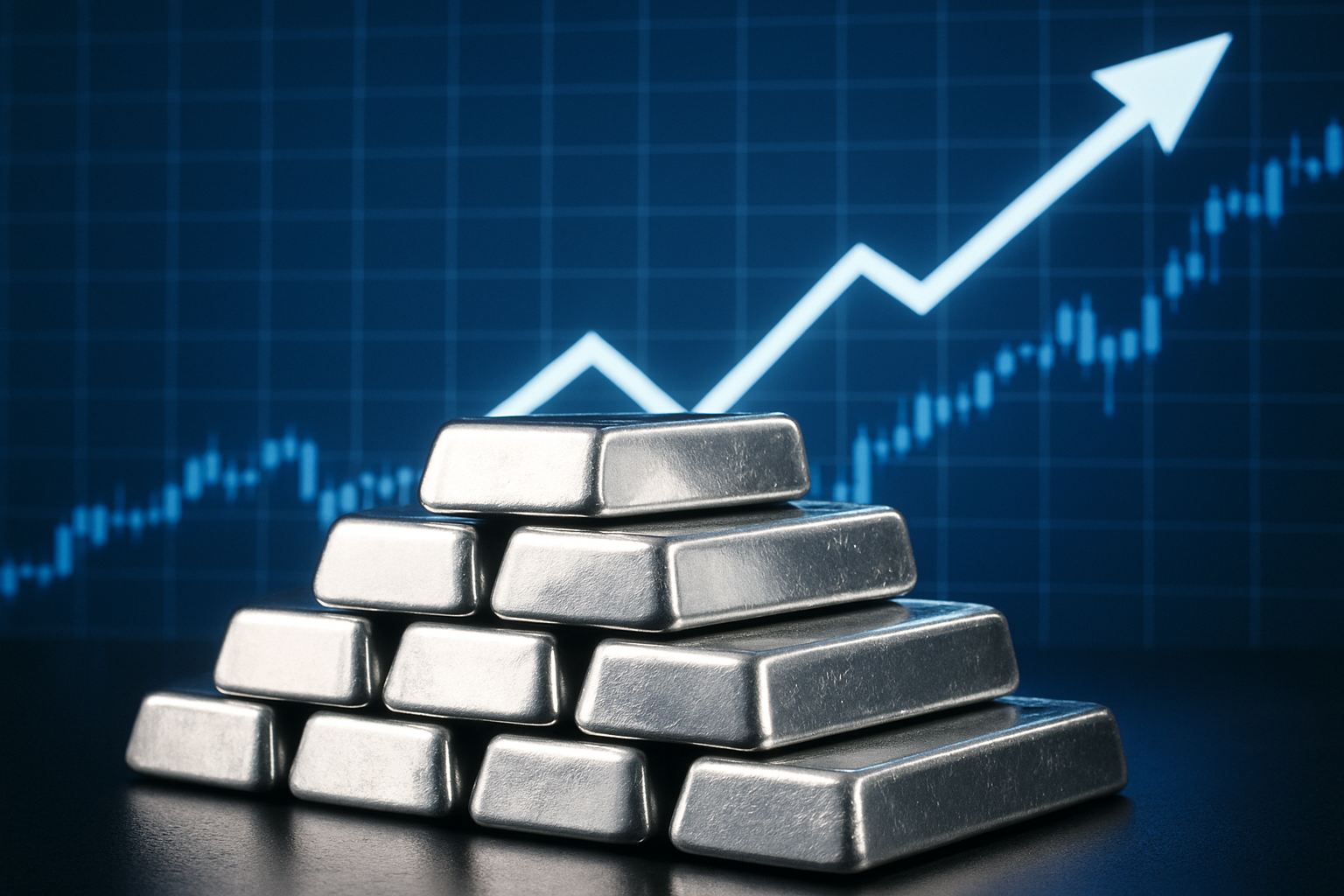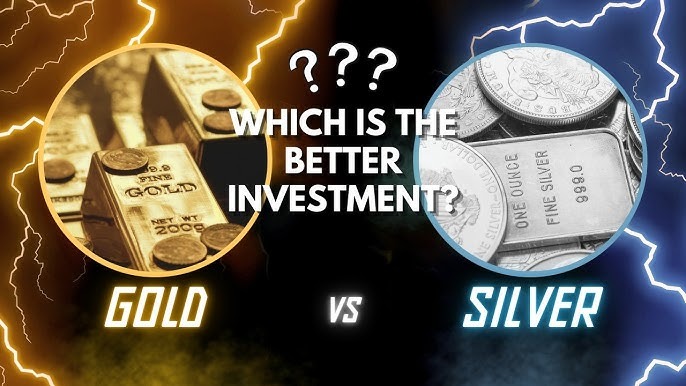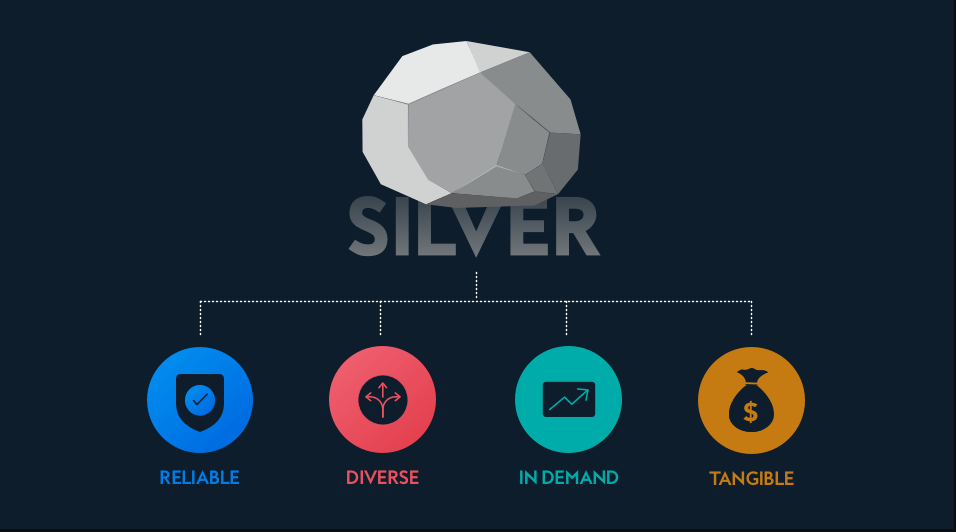The surge in the price of silver has outpaced gold's performance, driven by heightened investor interest and rising industrial demand, particularly in electronics and solar panel manufacturing.
Silver's dual role as both a precious metal and an industrial commodity has contributed to its price appreciation. The metal is extensively used in electronics, solar energy applications, and electric vehicles.
The Silver Institute projects that silver demand for photovoltaics will rise by over 170% by 2030, driven by global energy transitions and manufacturing expansion
Current Performance of Silver

Price Trends
In early April 2025, silver prices were around $30.99 per ounce. By mid-October, prices had climbed to over $53 per ounce, reflecting a significant upward trajectory.
This increase has been fueled by factors such as inflation concerns, geopolitical tensions, and a tightening supply of physical silver.
Factors Influencing Silver Prices

Several key elements are impacting silver's market dynamics in 2025:
Industrial Demand
Silver's demand continues to rise, driven by its critical role in electronics, solar energy, and electric vehicles (EVs). In 2025, industrial consumption surged by 7% to 700 million ounces.
This is bolstered by strong demand from EV powertrain and charging infrastructure, renewable energy growth, and AI's surging electricity requirements.
This growth underscores silver's essential role in modern technology and infrastructure.
Supply Constraints
The global silver market faces a significant supply deficit, projected to exceed 200 million ounces in 2025.
This shortfall is exacerbated by the fact that approximately 70% of silver is produced as a byproduct of other metals, limiting the market's ability to respond to price signals.
Additionally, silver inventories in key markets like London have declined, with some traders resorting to importing silver from New York to meet demand.
Economic Indicators
Trade tensions and tariff policies have introduced volatility into the silver market, influencing investor sentiment and industrial activity.
These factors contribute to short-term price fluctuations and impact long-term investment strategies.
Analysts caution that while silver's industrial demand remains robust, supply constraints and economic uncertainties could lead to market corrections.
Is Silver Or Gold The Better Investment?

In 2025, gold and silver are both strong investment options with distinct roles.
| Factor |
Gold |
Silver |
| Risk |
Steady and safe; good for preserving wealth. |
More volatile; higher gains possible but riskier. |
| Price |
Expensive; less accessible for small investors. |
Affordable; easier for retail investors to buy. |
| Diversification |
Provides stability in a portfolio. |
Offers growth tied to industry and tech demand. |
| Liquidity & Demand |
Widely traded; strong institutional support. |
Smaller market; influenced more by retail and speculation. |
| Best For |
Long-term security and conservative investors. |
Growth-focused investors comfortable with swings. |
Gold, at $4,116.77 per ounce, serves as a safe-haven asset amid economic uncertainty, geopolitical tensions, and inflation, with forecasts projecting up to $5,000 by 2026.
Silver, trading around $53.60 per ounce, benefits from rising industrial demand in electronics, solar energy, and EVs, coupled with supply constraints, and could reach $65 per ounce.
Gold offers stability, while silver provides growth potential, and investors can gain exposure through ETFs like GLD and SLV.
Expert Projections and Investment Considerations

Analyst Forecasts for Silver in 2025
As of mid-October 2025, silver prices have reached all time high, reflecting a significant increase from earlier projections.
Analysts have updated their forecasts to align with the current market dynamics.
Bank of America (BofA): BofA now projects silver to reach $65 per ounce by 2026, citing a severe physical shortage in the market, with borrowing rates exceeding 100% and pronounced backwardation. The London Bullion Market Association has been described as "effectively having a seizure" due to a lack of deliverable silver, while silver ETFs are demanding massive amounts of physical silver up to seven months of global mine output in one case.
Citigroup: Citigroup has raised its 6–12 month silver price target to $40 per ounce, citing tightening availability and robust demand.
Saxo Bank: Saxo Bank also anticipates silver prices to hit $40 per ounce in 2025, supported by supply constraints and increasing industrial applications.
Investment Considerations
Market Volatility: Silver prices have shown upward momentum and periods of decline, reflecting the metal's sensitivity to economic and industrial factors. Investors should prepare for potential price swings.
Diversification Benefits: Silver's dual role as an industrial commodity and a precious metal can offer diversification advantages within an investment portfolio, potentially serving as a hedge against economic uncertainties.
Long-Term Prospects: Despite short-term fluctuations, the long-term outlook for silver remains positive, driven by ongoing industrial applications and potential supply constraints.
Frequently Asked Questions (FAQ)
1.Why has silver surged so much in 2025?
Silver’s price has surged due to a combination of rising industrial demand in electronics, solar energy, and electric vehicles, tight supply, inflation concerns, and heightened investor interest. Its dual role as a precious metal and industrial commodity amplifies price movements.
2.Should I invest in silver or gold in 2025?
It depends on your goals. Gold offers stability and is ideal for wealth preservation during uncertainty, while silver is more volatile but provides growth potential due to industrial demand. Many investors hold both to balance stability and upside potential.
3.What factors should I consider before investing in silver?
Key factors include market volatility, industrial demand, supply constraints, geopolitical events, and your personal risk tolerance and investment goals. Considering these can help you make informed decisions about adding silver to your portfolio.
Conclusion
Considering current market conditions, silver stands out as an attractive investment in 2025.
Its essential role in industries such as electronics, solar energy, and electric vehicles, coupled with tight supply and strong price forecasts, makes silver a potentially valuable addition to a diversified investment portfolio.
Investors should remain vigilant of market fluctuations and geopolitical developments impacting silver prices.
Disclaimer: This material is for general information purposes only and is not intended as (and should not be considered to be) financial, investment or other advice on which reliance should be placed. No opinion given in the material constitutes a recommendation by EBC or the author that any particular investment, security, transaction or investment strategy is suitable for any specific person.

























